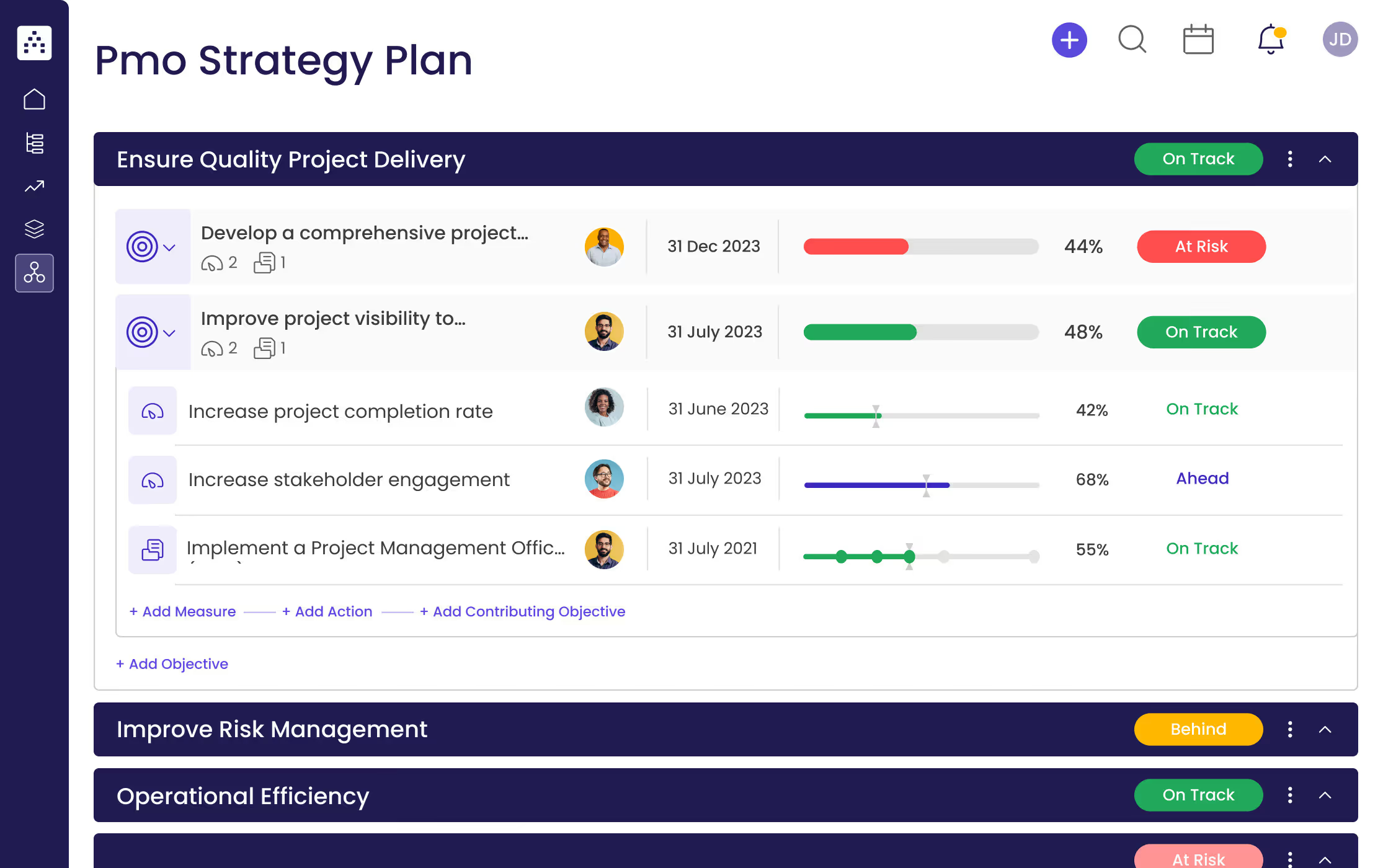What is a PMO Strategy?
A PMO strategy outlines the objectives, goals, and strategies for a Project Management Office (PMO). It is developed to ensure that the PMO is working efficiently and effectively towards the organization’s objectives. The PMO strategy should include the goals of the PMO, the strategies and actions needed to achieve those goals, and the measures used to evaluate the success of the PMO. It should also include a clear plan on how the PMO will allocate resources, track progress, and report results.
What's included in this Pmo Strategy template?
- 3 focus areas
- 6 objectives
- 6 projects
- 6 KPIs
Each focus area has its own objectives, projects, and KPIs to ensure that the strategy is comprehensive and effective.
Who is the Pmo Strategy template for?
The PMO strategy template is designed to help PMO leaders and teams develop strategies to ensure successful project delivery. It provides a comprehensive framework for defining, organizing, and measuring progress towards achieving the PMO’s objectives. The template helps PMO leaders organize their strategy into focus areas, objectives, and key performance indicators (KPIs) to ensure that the strategies are measurable and effective.
1. Define clear examples of your focus areas
Focus areas are the areas of focus of the PMO strategy. The focus areas define the goals of the PMO and help to organize the strategy into manageable and measurable objectives. Examples of focus areas in a PMO strategy could include ‘Ensure Quality Project Delivery’, ‘Improve Risk Management’, and ‘Optimize Resource Utilization’.
2. Think about the objectives that could fall under that focus area
Objectives are the desired outcomes of the PMO strategy. They should be specific, measurable, and achievable. Examples of objectives that could fall under a focus area could include ‘Develop a comprehensive project management solution’, ‘Identify and mitigate potential risks’, and ‘Maximize resource efficiency’.
3. Set measurable targets (KPIs) to tackle the objective
Key Performance Indicators (KPIs) are used to measure the success of the PMO’s objectives. KPIs should be specific, measurable, and achievable. Examples of KPIs could include ‘Increase project completion rate’, ‘Decrease project risk score’, and ‘Increase resource utilization rate’.
4. Implement related projects to achieve the KPIs
Projects are the specific actions or initiatives that are implemented to achieve the PMO’s objectives and KPIs. Examples of projects could include ‘Implement a Project Management Office (PMO)’, ‘Implement a Risk Management Plan’, and ‘Develop an effective resource allocation strategy’.
5. Utilize Cascade Strategy Execution Platform to see faster results from your strategy
Cascade Strategy Execution Platform helps PMOs improve project delivery and optimize resource utilization. Cascade’s platform enables PMOs to quickly and easily define, organize, and measure progress towards their desired objectives. With Cascade, PMOs can make sure that their strategies are aligned with the organization’s overall objectives and that they are seeing measurable results from their efforts.


